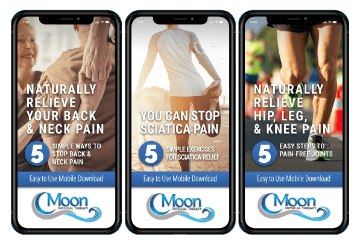How Nutrition Can Help Ease Your Aches and Pains
Are you reaching for a pill bottle in your daily battle against pain and inflammation, or are you looking for a healthy lifestyle change? The latter option will benefit you more in terms of long-term function, mobility, and safety.
But which lifestyle changes should you make? In addition to regular exercise, such as the types of targeted exercises you might receive in physical therapy, you should also look into your sleep, workplace ergonomics, and nutrition.
This blog will explain how nutrition and pain relief can go hand-in-hand. Keep reading to learn more!
Nutrition has been proven to help these common conditions
There are a number of common conditions that directly relate to nutrition and diet.
Here are some of the conditions in which nutrition advice is likely to be part of the patient’s physical therapy regimen:
- Diabetes: Diabetes and pre-diabetes pave the way for more serious conditions such as heart disease, kidney disease and blindness. More than 90 percent of patients with diabetes also experience neuropathic pain. Diet and nutrition will play a key role in managing these conditions.
- Autoimmune Disorders: The combined total of various autoimmune disorder patients (such as Crohn’s disease, multiple sclerosis, type 1 diabetes and rheumatoid arthritis) now outnumber cancer patients in America by a wide margin. Autoimmune disorders are frequently linked directly to deficiencies in a patient’s diet.
- Osteoarthritis: Obese patients are more likely to develop arthritis, especially in the knee. Once a person has been diagnosed with osteoarthritis of the knee, managing their weight becomes the most important key to managing the arthritis and pain.
- Obesity: Pain related to obesity can become a vicious cycle. Being overweight causes a patient pain, so they become more sedentary. Becoming more sedentary causes them to gain more weight, which leads to more pain.
- Inflammation: American diets tend to have a lot of vegetable oils and other inflammatory foods in them. This can make the pain from inflammation even worse. In many cases, a physical therapist will prescribe a diet with more antioxidants and anti-inflammatory foods to help manage pain.
Whatever condition may be causing you discomfort, it is likely that some dietary changes may help.
Here are five ways that proper nutritional strategies can help you control your pain and inflammation:
1. Focusing on anti-inflammatory foods
Why get your anti-inflammatory effects from an NSAID or steroid when you can get them from the foods you eat every day? Many of the menu items in the traditional Mediterranean diet, for instance, possess natural anti-inflammatory properties.
Foods such as whole grains, fatty fish, olive oil, turmeric, cherries, and cayenne pepper can reduce inflammation and the pain that comes with it.
At the same time, you’ll be eating fewer inflammatory foods such as red meat, fried foods and processed meats, turning the pain management scales decidedly in your favor.
2. Boosting the immune system
When your immune system malfunctions, pain often results. Autoimmune disorders are responsible for such painful chronic conditions as rheumatoid arthritis Kailua, HI.
Eating foods rich in omega-3 fatty acids, zinc, selenium, probiotics, and vitamins A and D can help you avoid or control autoimmune diseases, thus helping you enjoy greater comfort and a higher standard of overall wellness.
3. Weight management
Obesity has been associated with all kinds of problems, from heart diseases and type 2 diabetes to liver disease and certain kinds of cancer.
But did you know that obesity also hurts? Those added pounds can put a lot of stress on your joints and muscles, especially in the back, hips, knees and feet, where they can contribute to osteoarthritis development.
If the rising number on the scale corresponds to rising pain levels, the right dietary changes can turn things around. Focus on foods that are rich in nutrients, low in fat and sugar, and served in sensible portion sizes. You’ll shed pain as you shed pounds!
4. Strength building
Weak muscles are more vulnerable to injury, pain and inflammation; they also allow your posture to sag, throwing your weight off-balance, subjecting your entire musculoskeletal system to unnecessary discomfort.
Physical therapy exercises can help, but your muscles still need the basic building material known as protein. Getting plenty of lean, healthy proteins (from foods that are relatively low on the inflammation scale) can help you build a body that resists pain and injury.
5. Inflammation reduction
Your gut flora have a lot of influence on your overall health and comfort. Eating whole grains, lentils, avocado, low-fat yogurt and other probiotic foods can help you maintain high levels of “good bacteria” in your gut. This positive balance can help reduce inflammation throughout the body.
Contact us for more information
Our physical therapists Kailua, HI are well-versed in the effects of nutrition on physical health, well-being, and comfort.
Contact Moon PT or visit our physical therapy clinic Kailua, HI if you are living with chronic pain and inflammation. We can assess your situation and make recommendations to help you feel better!
Tags: physical therapist, knee pain relief, hip pain relief, Hip and Knee Pain, hip pain, physical therapy, Hip and Knee Pain Relief, Moon Physical Therapy, knee pain, Natural Treatment, Natural Pain Relief




